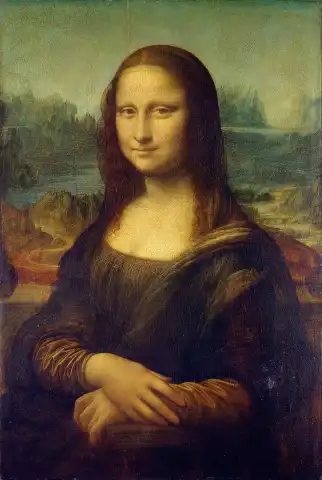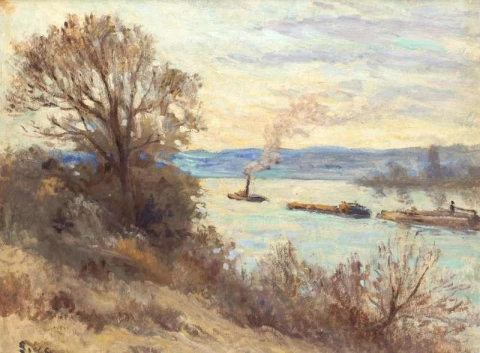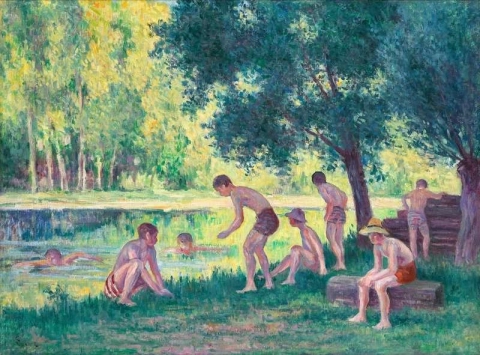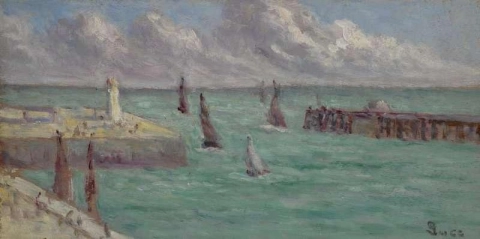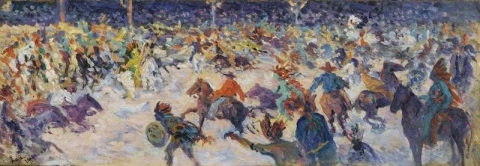

Hand painted reproductions of Maximilien Luce
Maximilien Luce: A Renowned French Painter and Master of Post-Impressionism
Maximilien Luce (1858–1941) was a French painter associated with the Post-Impressionist movement, celebrated for his vibrant landscapes and urban scenes. Known for his technical innovation and unique style, Luce made significant contributions to French art during the late 19th and early 20th centuries. His work is recognized for its depiction of light and color, as well as its commitment to capturing the dynamic energy of the modern world.
Early Life and Education
Maximilien Luce was born in Paris in 1858 into a working-class family. From a young age, Luce was drawn to art, and he began studying drawing at the École des Beaux-Arts in Paris. His early exposure to the city’s artistic community and academic training set the foundation for his future artistic endeavors. Luce’s work was initially focused on more traditional subjects, but as he developed as an artist, he became increasingly influenced by the revolutionary ideas of the French avant-garde.
During his studies, Luce befriended key figures in the Parisian art world, such as Georges Lemmen and Paul Signac. These relationships were crucial in shaping his artistic approach, as they introduced him to the techniques of Pointillism and Divisionism. Luce was inspired by these innovative methods and soon adopted them, applying them to his own landscapes and portraits.
Artistic Development and Style
Luce’s artistic style was deeply influenced by the Post-Impressionist movement, particularly the techniques of Pointillism, which was developed by Georges Seurat and Paul Signac. Pointillism, also known as Divisionism, involved applying small, distinct dots of pure color to the canvas, which, when viewed from a distance, would blend together to create a harmonious composition. This technique allowed Luce to achieve brilliant color contrasts and subtle shifts in light and shadow.
Throughout his career, Luce was known for his vibrant depictions of both urban and rural landscapes. His work often focused on the changing effects of light, using the unique Pointillist technique to capture the atmospheric quality of his subjects. His urban scenes, particularly those of Paris, were dynamic and full of movement, reflecting the bustling life of the city. At the same time, his rural landscapes conveyed a sense of tranquility, with lush fields and idyllic vistas bathed in natural light.
Luce’s portraits were another important aspect of his portfolio. Though he was primarily known for his landscapes, his portraiture demonstrated the same sensitivity to light and color that characterized his other works. His ability to capture the emotional essence of his subjects with a few deft brushstrokes made his portraits stand out in the context of Post-Impressionism.
Themes and Significance
The central themes of Luce’s work were nature, light, and the modern world. His landscapes often depicted scenes of the countryside, capturing the effects of changing seasons and times of day. Whether it was the golden hues of a sunset or the soft pastel shades of a morning sky, Luce’s use of color created a sense of movement and transformation within his landscapes.
In contrast, his urban scenes portrayed the vibrant life of Paris, with busy streets, bustling cafes, and iconic landmarks. These works were filled with energy, and Luce’s ability to depict the movement of people and traffic reflected the rapid pace of modern life. His work stands as both a celebration and a critique of the urbanization that defined the late 19th century.
Luce’s choice to use the Pointillist technique in both his landscapes and urban scenes set his work apart from that of other Post-Impressionists. The technique allowed him to create a sense of unity within the composition, with each individual dot contributing to the overall effect of the scene. The precise arrangement of color dots also enhanced the luminosity of his paintings, giving them a vibrant, almost electric quality.
Luce was also influenced by his political and social beliefs, and his work occasionally reflected these concerns. As a social activist, he was sympathetic to the working class, and some of his paintings depict workers in industrial settings, reflecting his commitment to social issues and his desire to give voice to the struggles of the common people.
Achievements and Influence
Maximilien Luce exhibited his work in numerous prestigious venues throughout France, including the Salon des Indépendants and the Salon d’Automne, where he gained widespread recognition for his technical skill and innovative approach to painting. Although he was not as famous as some of his contemporaries, such as Paul Signac or Georges Seurat, his work was highly regarded by critics and collectors alike.
Luce’s involvement in the development of Pointillism placed him at the forefront of the Post-Impressionist movement. His work was shown alongside that of other influential artists of the time, and he was an important figure within the French artistic community. His mastery of color theory and his exploration of light and texture had a lasting influence on subsequent generations of artists, especially those working within the Neo-Impressionist and Fauvist movements.
Legacy
Maximilien Luce’s legacy as an artist lies in his pioneering contributions to the Post-Impressionist movement, particularly his use of Pointillism and Divisionism. His vibrant depictions of the urban and rural landscapes of France offer a unique glimpse into the world of the late 19th and early 20th centuries. His paintings continue to be celebrated for their technical innovation and emotional depth, making them highly valued by collectors and museums.
Today, Luce’s works can be found in prominent museums, including the Musée d’Orsay in Paris, and in private collections worldwide. His influence on the development of modern art, particularly in the use of color and light, has cemented his place in the history of French painting.
Where to Find Reproductions of Maximilien Luce’s Art
For those wishing to bring the beauty of Maximilien Luce’s vibrant landscapes and urban scenes into their homes, POD (Painting On Demand) offers a selection of high-quality oil painting reproductions. These works provide an opportunity to experience the brilliance of Luce’s color theory and his masterful application of Pointillism, capturing the essence of 19th-century French life.
Imagine owning an original-style painting by one of the greatest artists in history. At POD, we offer you the chance to make this dream a reality. Each canvas is faithfully reproduced down to the smallest detail, allowing you to experience the beauty of the artist’s vision in your own home.
Our reproductions are crafted by experienced painters using the finest materials and time-honored methods. We are committed to delivering works of exceptional quality that will inspire and bring joy to your family for generations to come.
